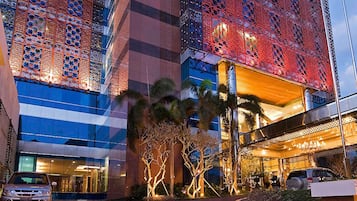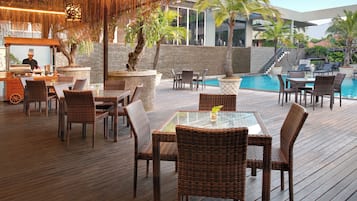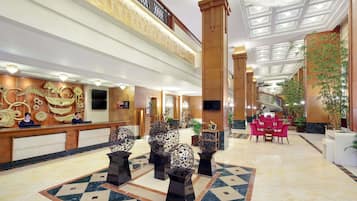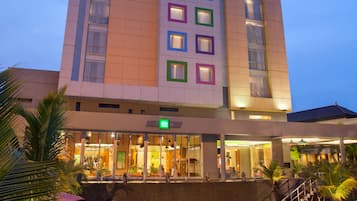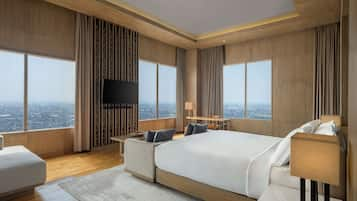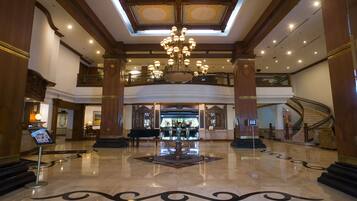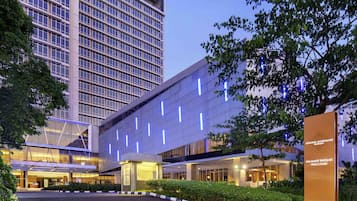Foto van Sharrie Shaw
Hotels met sauna in Centrum van Solo
- Verander van gedachtenBoek hotels met gratis annulering
- Wees kieskeurigZoek in bijna een miljoen accommodaties wereldwijd
Controleer de beschikbaarheid van Hotels met sauna in Centrum van Solo
Onze beste keuzes voor hotels met een sauna in Centrum van Solo

The Royal Surakarta Heritage - Handwritten Collection
The Royal Surakarta Heritage - Handwritten CollectionCentrum van Solo
8.2 van 10, Zeer goed, (166)
De prijs is € 32
inclusief belastingen en toeslagen
28 dec - 29 dec
De prijs is € 36
inclusief belastingen en toeslagen
10 jan - 11 jan 2026
De prijs is € 26
inclusief belastingen en toeslagen
10 jan - 11 jan 2026
De prijs is € 68
inclusief belastingen en toeslagen
18 jan - 19 jan 2026
De prijs is € 26
inclusief belastingen en toeslagen
4 jan - 5 jan 2026

8.6 van 10, Uitstekend, (77)
De prijs is € 44
inclusief belastingen en toeslagen
10 jan - 11 jan 2026
Laagste prijs per nacht gevonden in de afgelopen 24 uur op basis van een verblijf van 1 nacht voor 2 volwassenen. Prijzen en beschikbaarheid kunnen wijzigen. Mogelijk gelden er extra voorwaarden.
De beste hotelbeoordelingen voor Centrum van Solo
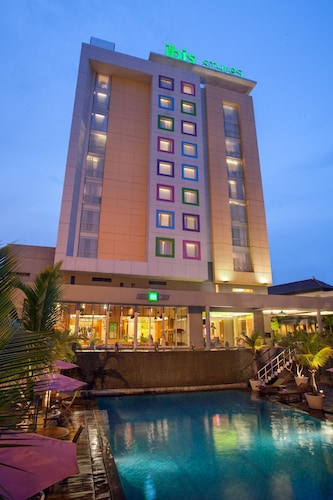
ibis Styles Solo
8/10 Goed
Ontdek de wereld met Expedia
- Spa in Centrum van Solo
- Hotels met restaurant in Baki
- Hotels in Boyolali
- Hotels in de buurt van Radya Pustaka Museum
- Hotels in Karanganyar
- Hotels in Baki
- Hotels in de buurt van Bengawan Solo
- Hotels in Surakarta
- Hotels in de buurt van Kraton Surakarta
- Hotels in Sragen
- Hotels in Kartasura
- Hotels in de buurt van Danar Hadi
- Hotels in Wonogiri
- Hotels in Sukoharjo
- Hotels in Centrum van Solo
- Hotels in Tawangmangu
- Hotels in Klaten
- Hotels in de buurt van Universitas Muhammadiyah Surakarta
- Hotels in de buurt van Solo Paragon Lifestyle Mall
- Hotels in Ngemplak
- Hotels in Colomadu
- B&B in Baki
- Bezoek Laweyan
- Bezoek Karanganyar
- Bezoek Wonogiri
- Bezoek Sragen
- Bezoek Centrum van Solo
- Bezoek Tawangmangu
- Bezoek Boyolali
- Bezoek Sukoharjo
- Bezoek Selo
- Bezoek Surakarta
- Bezoek Grogol
- Bezoek Baki
- Bezoek Kartasura
- Bezoek Klaten
- Pasar Klewer
- Solo Paragon Lifestyle Mall
- Mangkunegaran paleis
- Bengawan Solo
- Danar Hadi
- The Heritage Palace
- Radya Pustaka Museum
- Kraton Surakarta
- Vakanties in Baki
- Grojogan Sewu-waterval
![At the museum no photos are allowed which is really unfortunate as it was well worth the visit and the guided tour is definitely not to be missed. In the museum there are even Batik made from the Dutch era which depicts stories like Little Red Riding Hood and Snow White!
I enjoyed the tour v much and at the end of the tour we were brought to this room where the artisan were working on hand drawn batik.
Below is an excerpt from Wikipedia for anyone interested in learning more about the process of batik making.
Firstly, a cloth is washed, soaked and beaten with a large mallet. Patterns are drawn with pencil and later redrawn using hot wax, usually made from a mixture of paraffin or bees wax, sometimes mixed with plant resins, which functions as a dye-resist. The wax can be applied with a variety of tools. A pen-like instrument called a canting (IPA: [tʃantiŋ], sometimes spelled with old Dutch orthography tjanting) is the most common. A canting is made from a small copper reservoir with a spout on a wooden handle. The reservoir holds the resist which flows through the spout, creating dots and lines as it moves. For larger patterns, a stiff brush may be used. Alternatively, a copper block stamp called a cap (IPA: [tʃap]; old spelling tjap) is used to cover large areas more efficiently.
After the cloth is dry, the resist is removed by scraping or boiling the cloth. The areas treated with resist keep their original color; when the resist is removed the contrast between the dyed and undyed areas forms the pattern. This process is repeated as many times as the number of colors desired.
The most traditional type of batik, called batik tulis (written batik), is drawn using only the canting. The cloth need to be drawn on both sides and dipped in a dye bath three to four times. The whole process may take up to a year; it yields considerably finer patterns than stamped batik.
Source: Wikipedia](https://images.trvl-media.com/place/6224808/26fd1460-c65a-4c1a-9444-7a893e883ac9.jpg?impolicy=fcrop&w=1200&h=500&q=medium)


